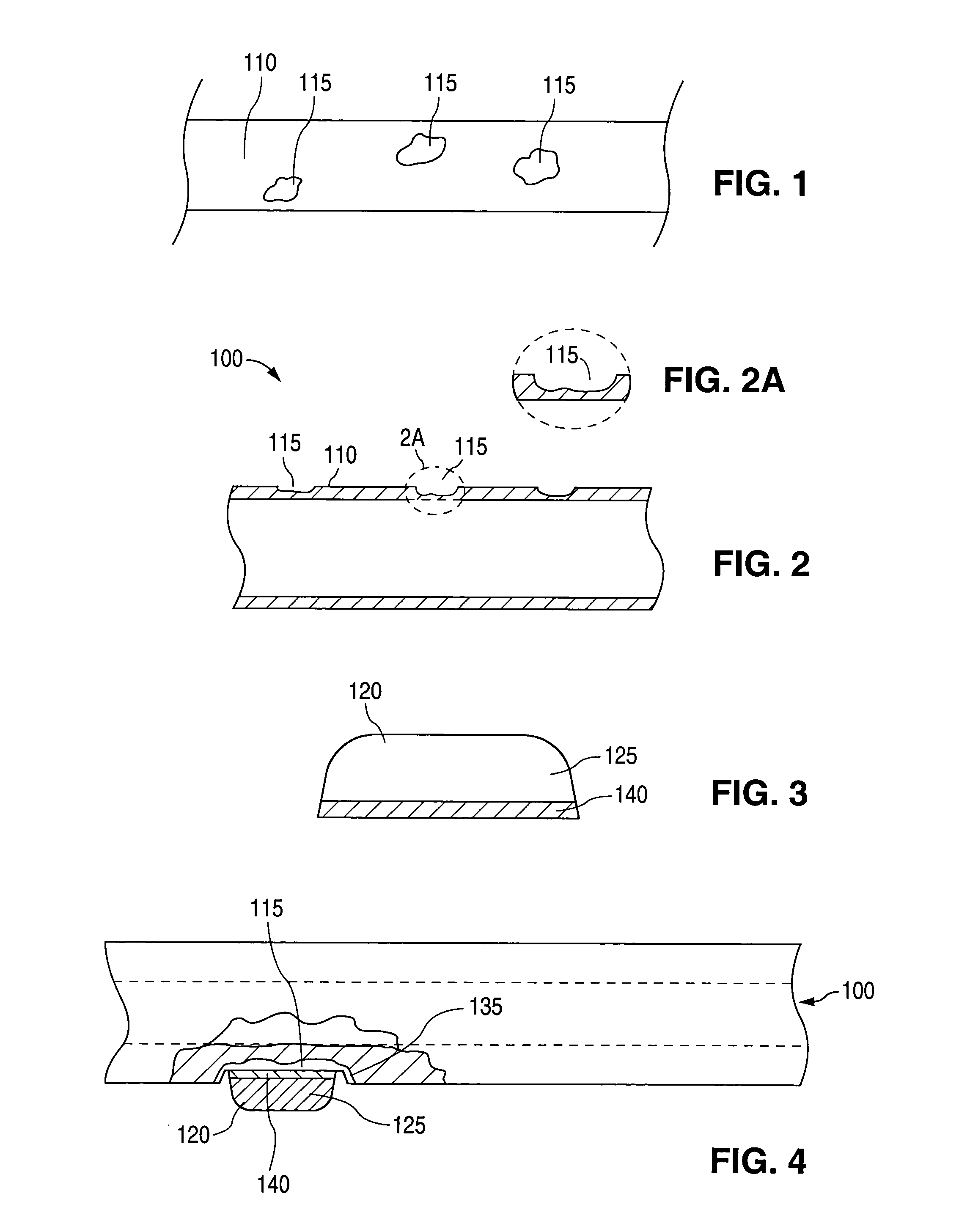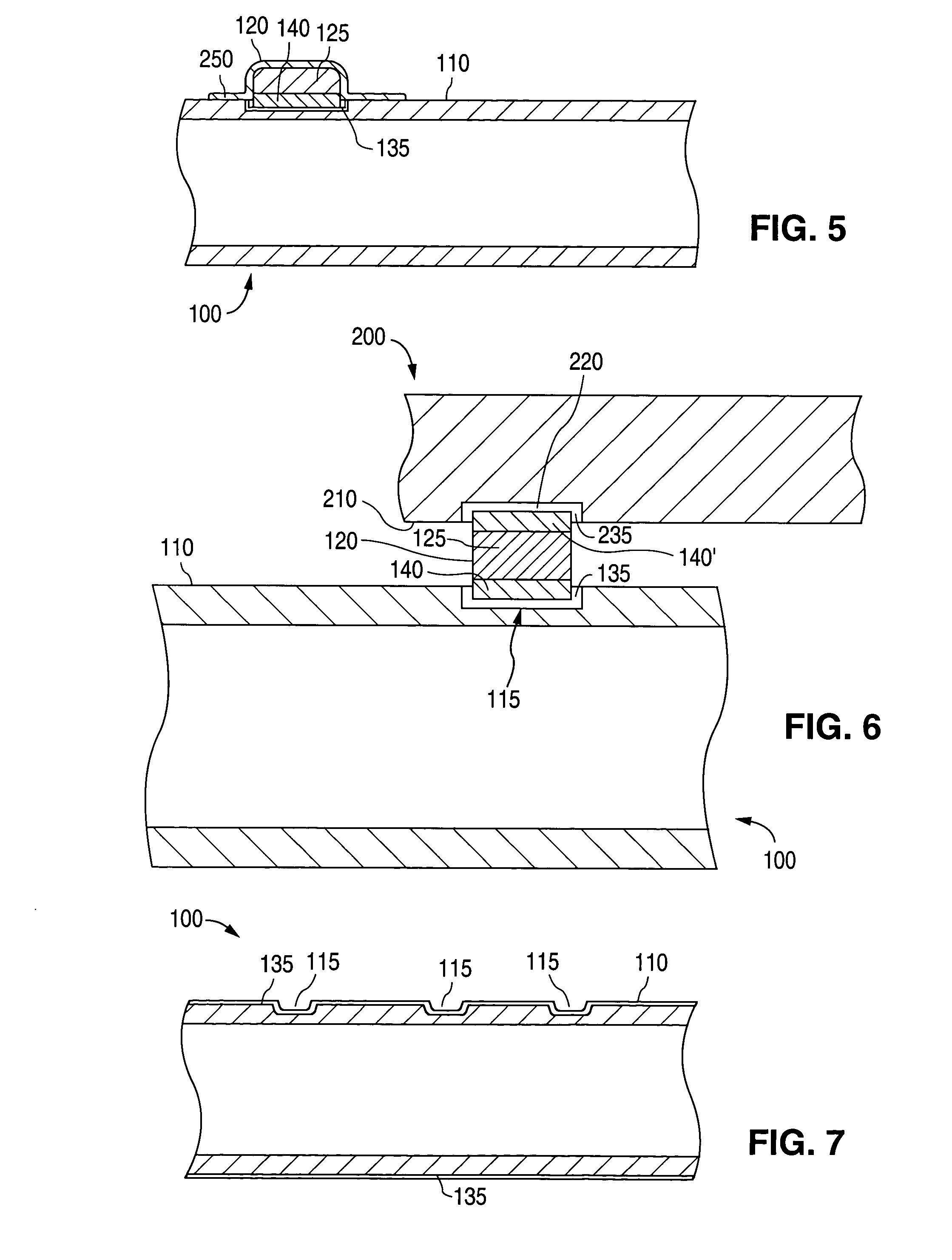Porous glass fused onto stent for drug retention
a technology of porous glass and stent, which is applied in the field of porous glass fused onto stent for drug retention, can solve the problems of polymer cracking in subsequent processing steps, excessive material, and often adverse or even toxic side effects of systemic dosing
- Summary
- Abstract
- Description
- Claims
- Application Information
AI Technical Summary
Benefits of technology
Problems solved by technology
Method used
Image
Examples
Embodiment Construction
[0019] As can be seen by reference to FIGS. 1 and 2, the implantable medical device 100 comprises a surface 110 with at least one attachment region 115 to which a glass or ceramic component 120 attaches. (FIG. 3) The term “ceramic component” encompasses components comprising ceramic or glass unless otherwise indicated.
[0020] When the ceramic component 120 attaches to the surface 110, the attachment region 115 is a portion of the surface 110. Alternatively, an attachment region is formed in the surface 110 by removing material. In those cases, the attachment region 115 is the surface left behind after the material has been removed. Attachment regions 115 are formed in any material to which the ceramic component 120 can attach using one of the attachment methods described below. In some embodiments, attachment regions 115 are formed in surfaces 110 that are metal. In some of these embodiments, the metal is selected from stainless steel, tantalum, niobium, super-elastic nickel-titaniu...
PUM
 Login to View More
Login to View More Abstract
Description
Claims
Application Information
 Login to View More
Login to View More - R&D
- Intellectual Property
- Life Sciences
- Materials
- Tech Scout
- Unparalleled Data Quality
- Higher Quality Content
- 60% Fewer Hallucinations
Browse by: Latest US Patents, China's latest patents, Technical Efficacy Thesaurus, Application Domain, Technology Topic, Popular Technical Reports.
© 2025 PatSnap. All rights reserved.Legal|Privacy policy|Modern Slavery Act Transparency Statement|Sitemap|About US| Contact US: help@patsnap.com



